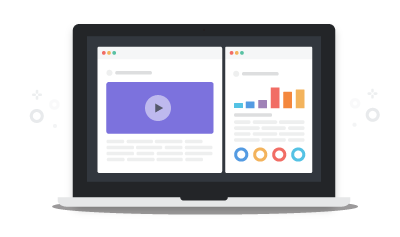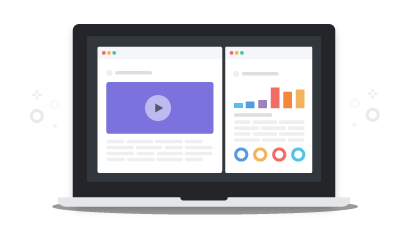March 8, 2017 By Chad WhiteMobile phones, Twitter, texting, video games, and other digital era trappings have been blamed for shortening our attention spans to less than that of goldfish. You might be tempted to throw email in that bucket…but you’d be wrong. According to an analysis of billions of emails using Litmus Email Analytics… The average time spent reading an email increased by nearly 7% to 11.1 seconds between 2011 and 2016. [Tweet this →] Honestly, we were more than a little surprised by this. We expected to find that email attention spans were shrinking. Instead, we found that…
Mobile phones, Twitter, texting, video games, and other digital era trappings have been blamed for shortening our attention spans to less than that of goldfish. You might be tempted to throw email in that bucket…but you’d be wrong. According to an analysis of billions of emails using Litmus Email Analytics…
The average time spent reading an email increased by nearly 7% to 11.1 seconds between 2011 and 2016. [Tweet this →]
Honestly, we were more than a little surprised by this. We expected to find that email attention spans were shrinking. Instead, we found that the percentage of emails read for more than 18 seconds grew to 44.4% in 2016 from 38.4% in 2011.
We also expected to find that mobile email reading was the culprit behind shrinking email attention spans. That hypothesis was completely wrong, as the average amount of time that mobile users spend reading an email increased nearly 16% over those six years.
Historically, longer engagement with mobile emails wasn’t necessarily a good thing. That’s because mobile email clients didn’t always render emails well and brands didn’t always send mobile-friendly emails.
However, mobile email clients have improved significantly and brands have made huge strides in making their emails mobile-friendly, to the point that responsive is now the dominant email design approach. On top of that, mobile screen sizes have increased considerably, making email reading even easier. So the time spent with emails on mobile has increased during a time when the email client user experience and the subscriber experience have both improved dramatically.
The gains in email engagement times have been fairly consistent. The average amount of time that mobile users spend reading an email increased every single year from 2011 to 2016. And seasonality didn’t appear to affect these gains, either.
 |
How long do your subscribers spend reading your emails?Find out how engaging your emails are with Litmus Email Analytics, which tells you how many seconds your subscribers spend interacting with your messages. Sign up free! |
Why the big increase in mobile email engagement times? We have a few theories:
- Ownership of desktop computers has stagnated, while ownership of tablets and smartphones has exploded. Consumers are becoming more comfortable doing a range of activities, including checking email and shopping, on mobile devices. That trend is most evident in the percentage of consumers that rely solely on mobile devices for internet access has grown over the years, especially among those under 30 years old.
- People turn to their mobile devices when they’re bored or have a little free time on the subway or bus, in a waiting room, while watching TV, or even while in the bathroom. They aren’t in a big hurry—at least not compared to when they’re at work. That means that many of the email interactions on mobile devices are slightly more relaxed compared to those on desktops.
- While a lot of email content has become shorter, the content of some emails has gotten much longer. Media companies are the best example of this trend. Email newsletters by theSkimm, REDEF, Next Draft, and traditional media can be lengthy and provide a lot of value without clicking through. Email has become so important to some media companies that they’ve invested in building some of their own email technology.
Whatever the reason, the increase in email attention spans is impressive, especially considering the rise in ad blocking and ad skipping, and the decline in organic social reach.
In this infographic, we explore how duration of email engagement has changed over the years and how marketers can create emails that are optimized for short attention spans.
While technology is often blamed for shortening attention spans, email is not a culprit. In fact, the average time spent reading an email increased over the past six years, according to an analysis of billions of email opens between 2011 and 2016 using Litmus’ Email Analytics.
The average time spent reading an email increased nearly 7% over the past six years.
- 2016: 11.1 seconds
- 2011: 10.4 seconds
Engagement increased across the spectrum, with fewer recipients glancing at and skim reading emails and with more recipients reading emails closely.
- The percentage of emails that subscribers Read (>8s) increased from 53.4% in 2011 to 56.8% in 2016
- The percentage of emails that subscribers Skim Read (2-8s) decreased from 21.7% in 2011 to 20.8% in 2016
- The percentage of emails that subscribers Glanced (<2s) at decreased from 24.9% in 2011 to 22.4% in 2016
Mobile users spend more time reading their emails, not less.
- The percentage of emails on mobile devices that subscribers Read (>8s) increased from 50.4% in 2011 to 59.7% in 2016
- The percentage of emails on mobile devices that subscribers Skim Read (2-8s) decreased from 20.8% in 2011 to 20.3% in 2016
- The percentage of emails on mobile devices that subscribers Glanced (<2s) at decreased from 28.8% in 2011 to 20.0% in 2016
Email attention spans rose as the percentage of email opens on mobile devices increased from roughly 20% in 2011 to about 55% in 2016.
How to Optimize Your Emails for Short Attention Spans
While email attention spans are increasing, they’re still pretty short. Here are seven tips for how to clearly communicate with your subscribers and encourage deeper reading:
- Optimize your subject line and preview text so they align well with your email’s content. When they’re misaligned, subscribers will only give your email a glance.
- Use responsive or mobile-aware email design. Subscribers often delete or unsubscribe from emails that aren’t mobile-friendly.
- Use heads, subheads, bullets, and other tactics to communicate quickly. Having lots of full sentences and paragraphs can bog down the flow of an email.
- Avoid rendering problems. Test your emails across a wide range of email clients. Rendering problems can distract subscribers and cut short engagement.
- Use your “above the fold” space wisely. However, don’t try to force too much content into that first 500 or so pixels. You can build toward a “below the fold” call-to-action.
- Use compelling images. The right image is worth 1,000 words and can really grab the attention of your subscribers and pull them into the content.
- Pay attention to email load times. Too many large images can cause long load times, frustrating subscribers. Use ample HTML text to lighten the load.
- Long emails are okay. Subscribers will absolutely scroll if your email content is relevant. But do keep your email’s code to less than 102kb to avoid clipping in email clients such as Gmail.
- Make sure your links are the right ones. A broken link will end an email interaction for most subscribers, and a poorly chosen landing page may confuse them.
Methodology
The information in this infographic is based on data from billions of email opens between 2011 and 2016 as tracked by Litmus Email Analytics. For each open, duration of engagement is tracked in 2-second increments (less than 2 seconds, 2 seconds or more but less than 4 seconds, etc.) up to 18 seconds, after which engagement is indicated as simply “more than 18 seconds.” For our “average time spent reading an email” calculation, we used the midpoints of those 2-second increments (i.e., 1 second for the “less than 2 seconds” interval) and used 19 seconds as a very conservative estimate for the midpoint of the “more than 18 seconds” interval.
 |
How well do you hold your subscribers’ attention?Find out how engaging your emails are with Litmus Email Analytics, which shows you how many seconds your subscribers spend engaging with your messages. Sign up free! |
Source: Email Attention Spans Increasing [Infographic] : Litmus

